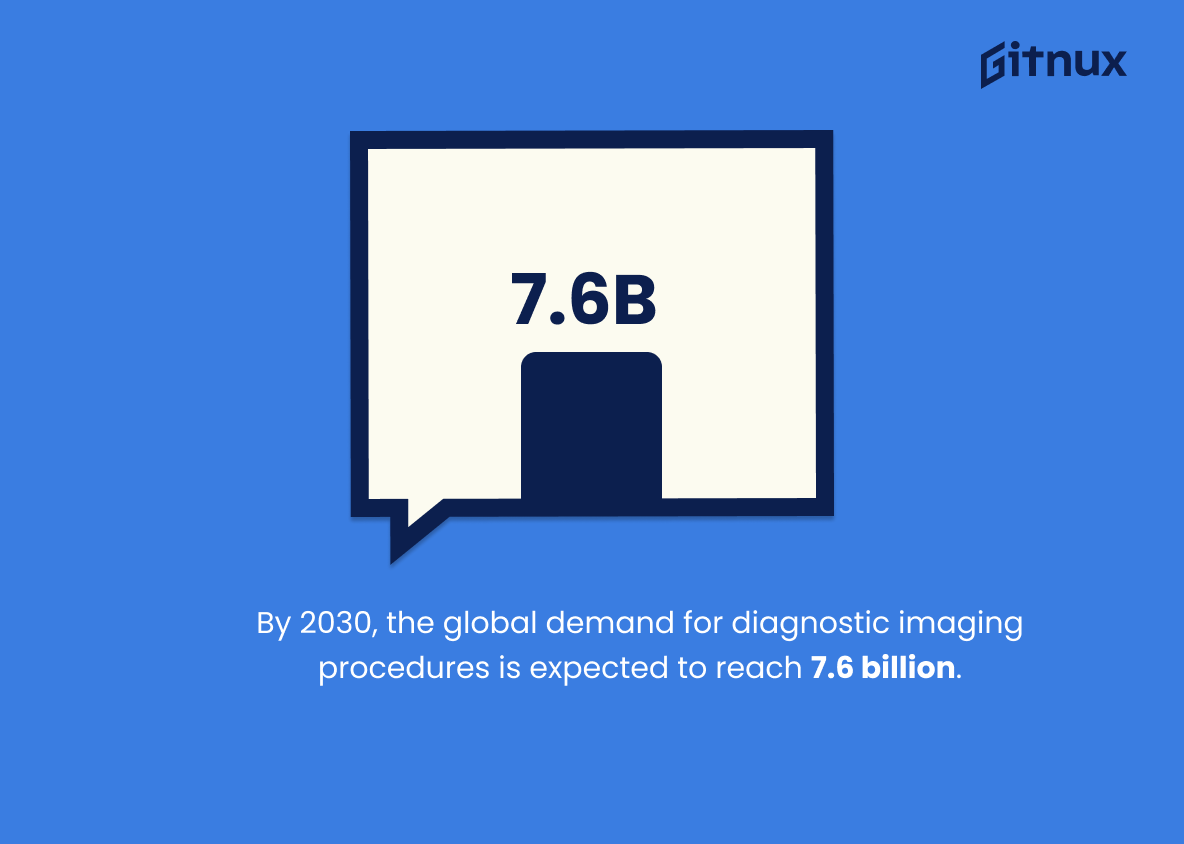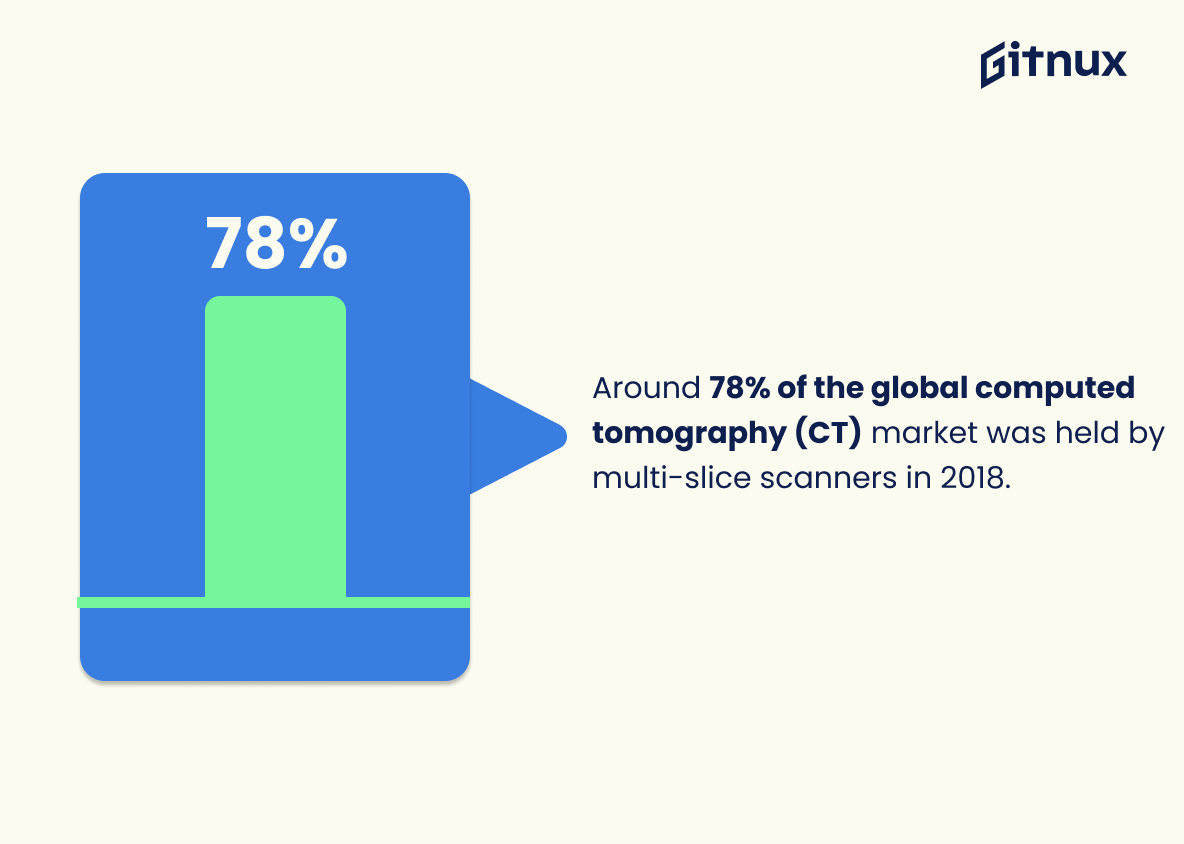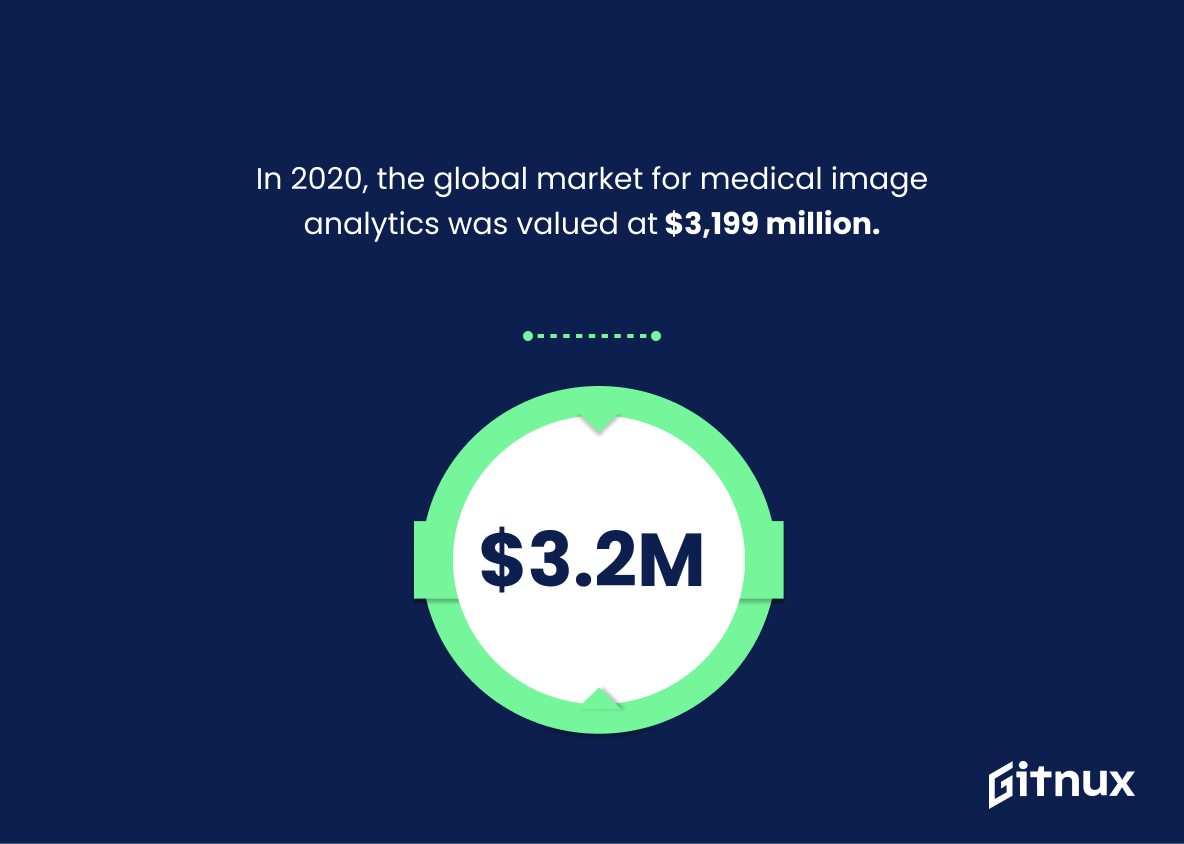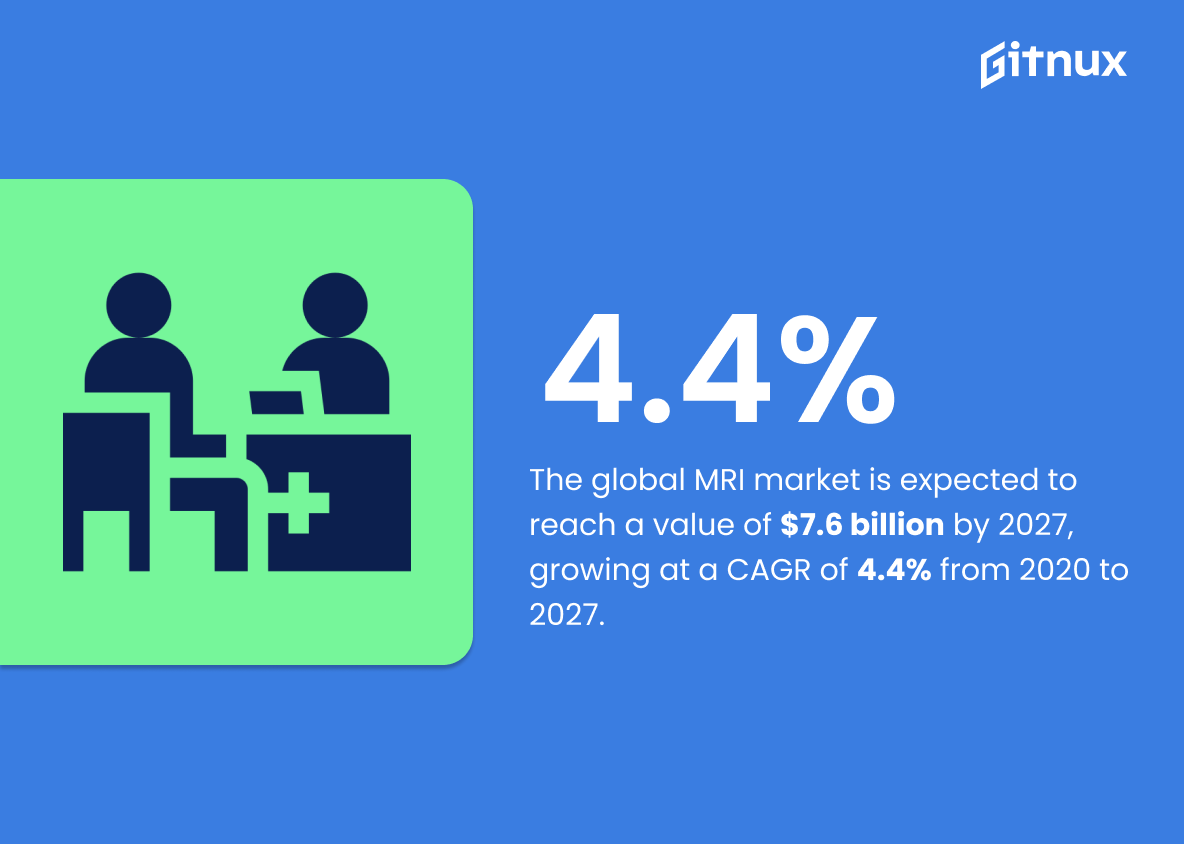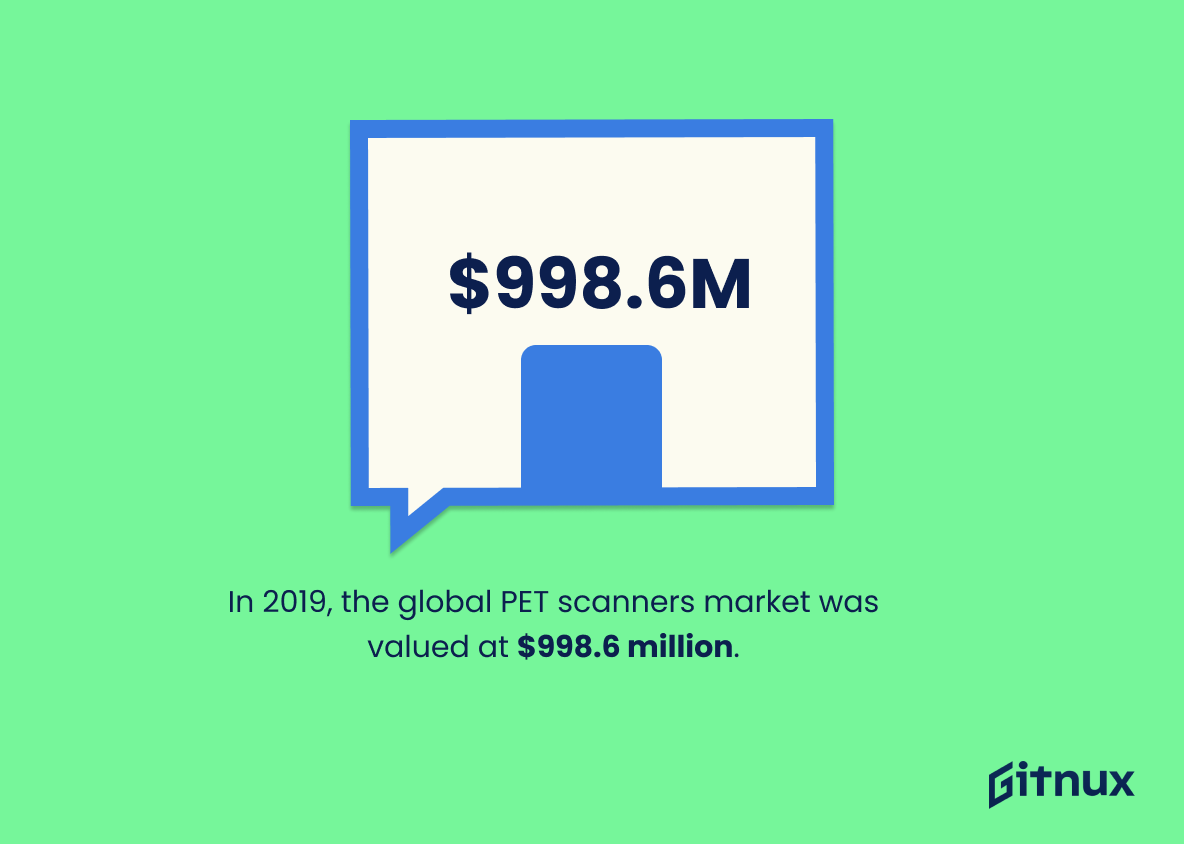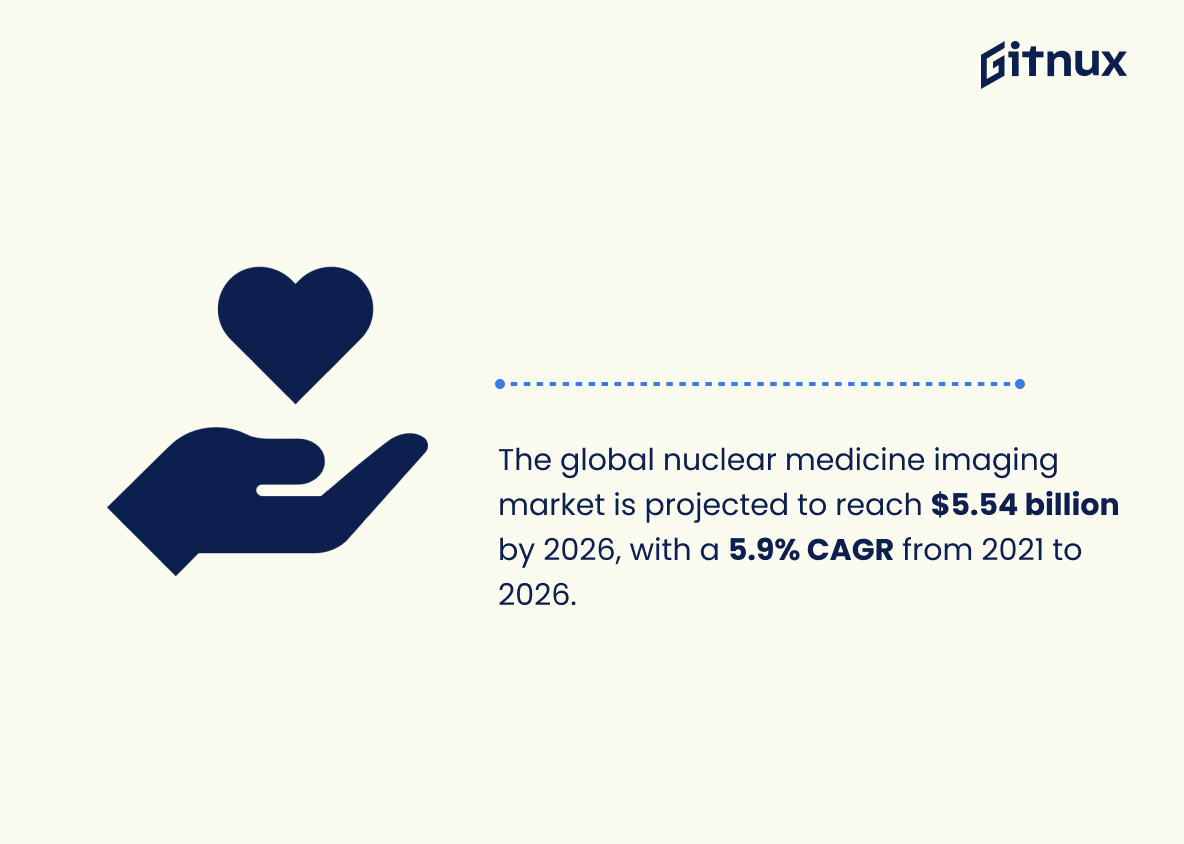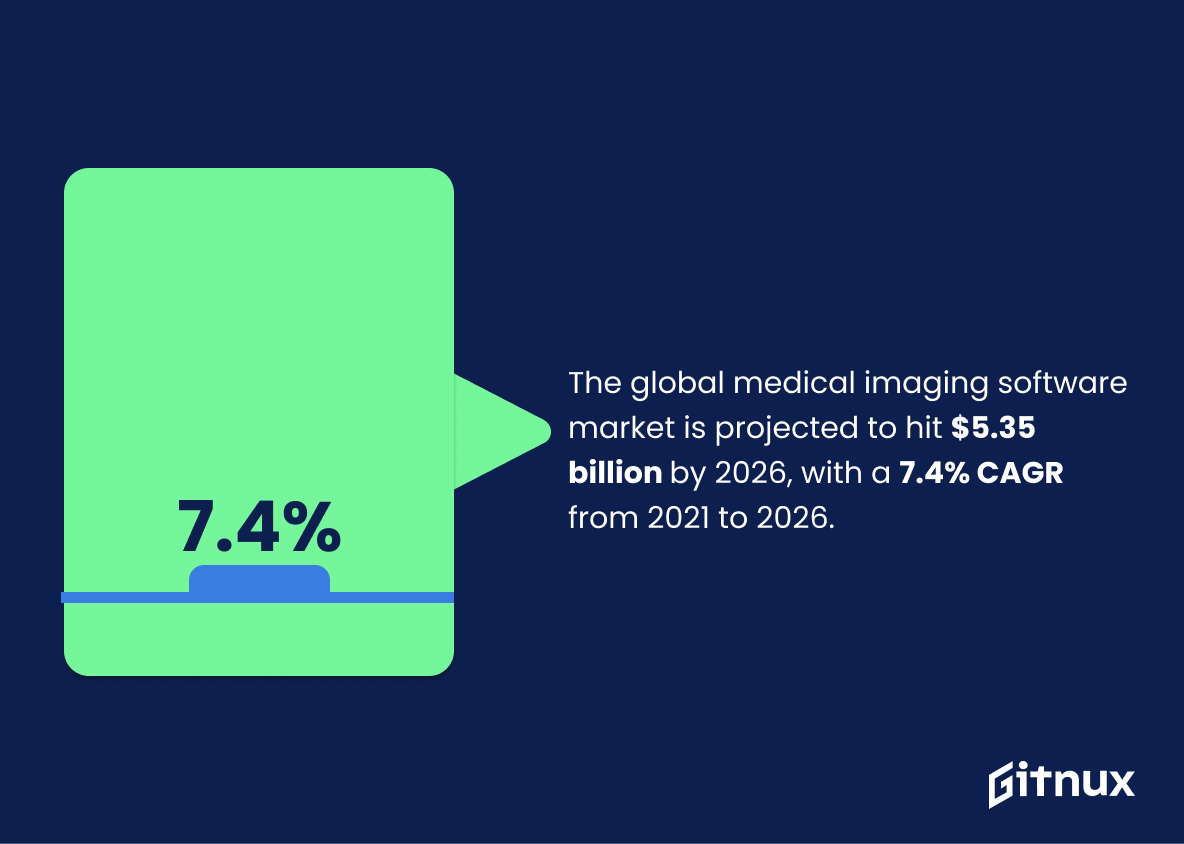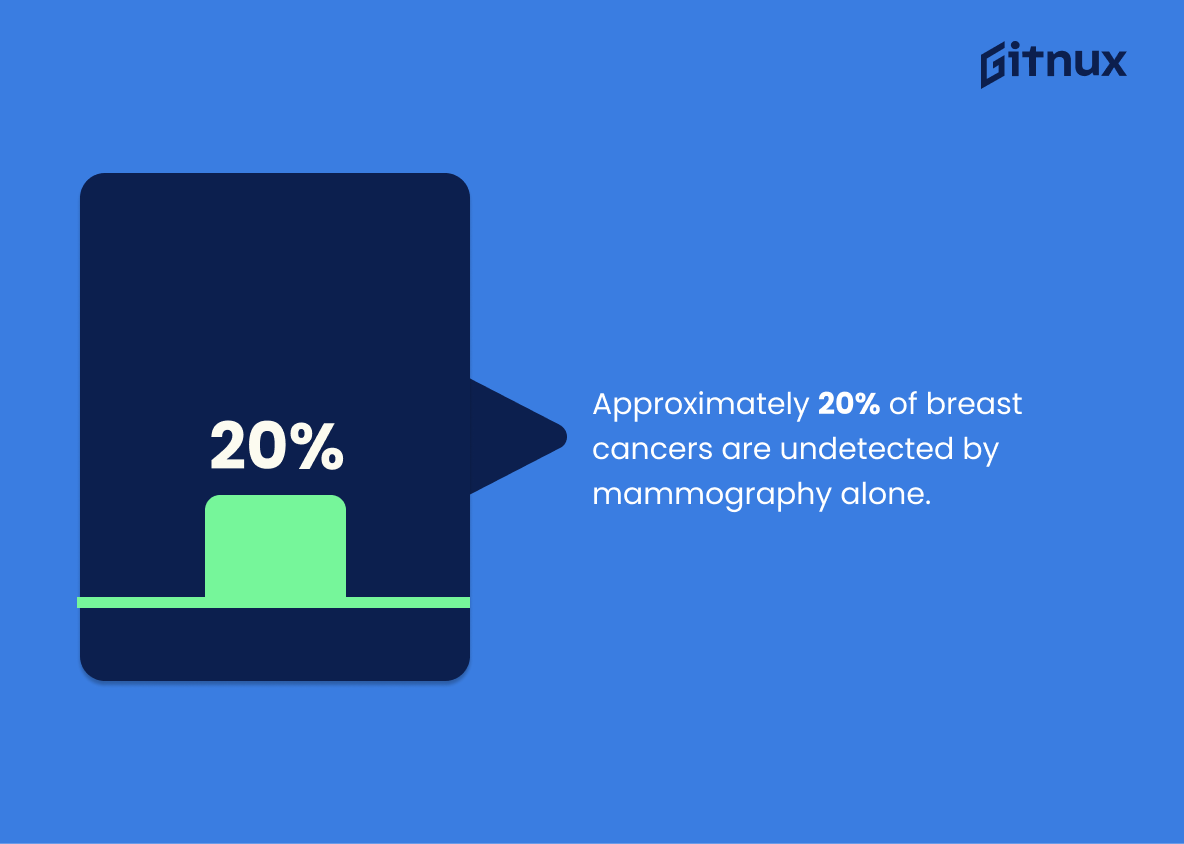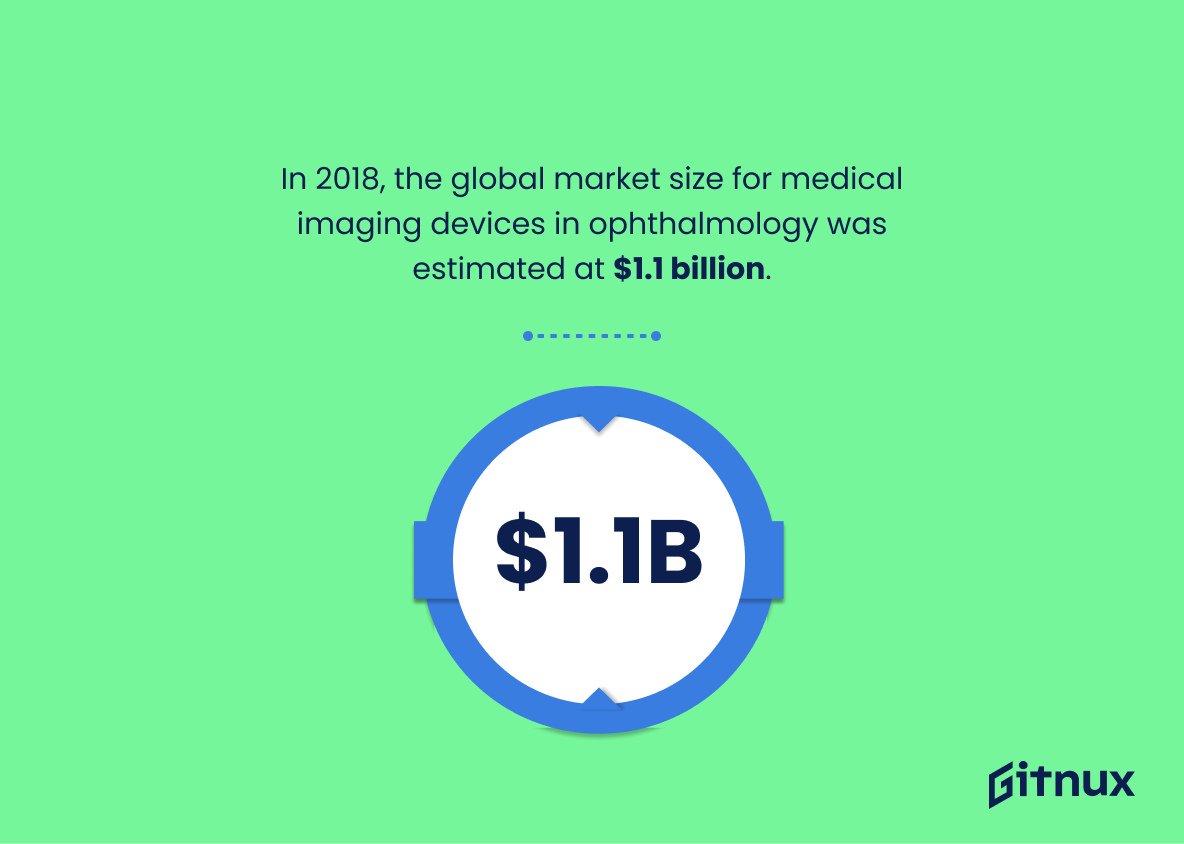The medical imaging industry is a rapidly growing sector, with the global market expected to reach $33.9 billion by 2027 and grow at a CAGR of 5.2% from 2020 to 2027. Medical ultrasound imaging accounted for approximately 20.6% of this market in 2019, while North America held 42.1%. The AI-driven medical imaging market is estimated to be worth $4.3 billion by 2026, and diagnostic imaging procedures are projected to reach 7.6 billion globally by 2030; X-ray systems had the largest share (30%) in 2019 among all types of medical images used worldwide that year, followed closely behind by portable devices which are forecasted to have an 8.8% growth rate between 2020 and 2027 due largely in part because they offer convenience over traditional methods such as computed tomography (CT) scanners where multi-slice scanners made up 78% of its total global demand back in 2018 alone.
Medical image analytics was valued at around 3199 million USD last year while MRI markets were estimated at 7600 million USD with 4 point 4 percent CAGR till twenty twenty seven PET scanner markets stood close second with nine hundred ninety eight point six million dollars valuation Nuclear medicine Imaging Equipment Market was five thousand fifty four Million Dollars In Twenty Twenty Six And Medical Image Processing Software Global Market Was Five Thousand Three Hundred Fifty Million Dollars By TwentyTwentySix Asia Pacific region has seen tremendous growth too With A Five Point Nine Percent Compound Annual Growth Rate From Two Thousand Eighteen To Two Thousand Twenty Three Teleradiology Markets Are Expected To Reach Ten Billion Eight Hundred Million US Dollar Mark By Year Of Twentysix Lastly Optical Coherence Tomography OCT Systems Have Seen An Impressive Ten Point Four Percent Compound Annual Growth Rate Between Years Of 2021 Till Twentysight While Ophthalmic Imaging Equipment Had One Billion One Hundred Million Valuation Back In 2018 General Electric Held Fifteen Point Two Percent Share Of Total Global Medical Imaging Market Last Year Mammograms Alone Cannot Detect All Breast Cancer Cases As Approximately TwentyPercent Go Undetected Through This Method
Medical Imaging Statistics Overview
The global market for AI in medical imaging is expected to reach $4.3 billion by 2026.
This statistic is a testament to the immense potential of AI in medical imaging. It shows that the industry is growing rapidly and is expected to reach a staggering $4.3 billion by 2026. This indicates that AI is becoming increasingly important in the medical imaging field, and that it is likely to continue to be a major player in the industry for years to come.
By 2030, the global demand for diagnostic imaging procedures is expected to reach 7.6 billion.
This statistic is a powerful indicator of the growing importance of medical imaging in the healthcare industry. It highlights the need for healthcare providers to invest in the latest diagnostic imaging technologies to meet the increasing demand for these procedures. Furthermore, it serves as a reminder of the potential for medical imaging to improve patient outcomes and reduce healthcare costs.
In 2019, X-ray systems held the largest market share of nearly 30% in the global medical imaging market.
This statistic is a testament to the importance of X-ray systems in the medical imaging market. It highlights the fact that X-ray systems are the most widely used and trusted technology for medical imaging, and that they are relied upon by healthcare professionals to provide accurate and reliable results. This statistic is a reminder of the importance of X-ray systems in the medical imaging industry, and the need to continue to invest in and develop this technology.
Around 78% of the global computed tomography (CT) market was held by multi-slice scanners in 2018.
This statistic is a powerful indicator of the current state of the medical imaging industry. It shows that multi-slice scanners are the dominant technology in the global computed tomography (CT) market, accounting for nearly four-fifths of the market share. This is significant because it demonstrates the importance of multi-slice scanners in the medical imaging industry, and highlights the need for healthcare providers to invest in this technology in order to stay competitive.
In 2020, the global market for medical image analytics was valued at $3,199 million.
This statistic is a testament to the immense potential of medical image analytics. It shows that the market for this technology is growing rapidly, indicating that it is becoming increasingly important in the medical field. This statistic is a clear indication that medical imaging is becoming an increasingly important tool for diagnosing and treating diseases, and it is likely to continue to grow in the future. This makes it an important topic to discuss in a blog post about medical imaging statistics.
The global MRI market is expected to reach a value of $7.6 billion by 2027, growing at a CAGR of 4.4% from 2020 to 2027.
This statistic is a testament to the growing importance of MRI technology in the medical field. With a projected CAGR of 4.4%, it is clear that MRI technology is becoming increasingly popular and is expected to continue to grow in the coming years. This statistic is important to consider when discussing medical imaging statistics, as it provides insight into the current and future trends of MRI technology.
In 2019, the global PET scanners market was valued at $998.6 million.
This statistic is a testament to the importance of PET scanners in the medical imaging industry. It highlights the fact that PET scanners are a vital tool for diagnosing and treating a variety of medical conditions, and that the demand for them is growing. This statistic is a valuable insight into the current state of the medical imaging industry, and it is essential for anyone interested in the field to be aware of.
The global market for nuclear medicine imaging is expected to reach $5.54 billion by 2026, growing at a CAGR of 5.9% from 2021 to 2026.
This statistic is a powerful indicator of the potential of nuclear medicine imaging in the medical field. It shows that the market for this technology is expected to grow significantly over the next five years, indicating that it is a viable and profitable investment for medical professionals. This statistic is especially relevant to a blog post about medical imaging statistics, as it provides a clear indication of the potential of nuclear medicine imaging in the medical field.
The global market for medical imaging software is expected to reach $5.35 billion by 2026, growing at a CAGR of 7.4% from 2021 to 2026.
This statistic is a testament to the growing importance of medical imaging software in the healthcare industry. With the global market for medical imaging software projected to reach $5.35 billion by 2026, it is clear that this technology is becoming increasingly essential for medical professionals. The 7.4% CAGR from 2021 to 2026 further highlights the rapid growth of this sector, indicating that medical imaging software is here to stay.
The Asia-Pacific medical imaging market is expected to grow at a CAGR of 5.9% between 2018 and 2023.
This statistic is a crucial indicator of the potential of the Asia-Pacific medical imaging market. It shows that the market is expected to experience a steady growth over the next five years, indicating that it is a viable and profitable industry. This is important information for anyone interested in the medical imaging industry, as it provides an insight into the potential of the market and the opportunities it presents.
The global teleradiology market is projected to reach $10.8 billion by 2026, growing at a CAGR of 8.2% from 2021 to 2026.
This statistic is a testament to the growing importance of teleradiology in the medical imaging industry. As the global teleradiology market is projected to reach $10.8 billion by 2026, it is clear that teleradiology is becoming an increasingly integral part of the medical imaging landscape. This statistic is indicative of the fact that teleradiology is becoming an increasingly popular and viable option for medical imaging professionals, and it is likely to continue to grow in the coming years.
The global PACS (Picture Archiving and Communication System) market is estimated to reach $2.9 billion by 2023, growing at a CAGR of 5.2% from 2018 to 2023.
This statistic is a testament to the growing importance of PACS in the medical imaging industry. As the global PACS market is estimated to reach $2.9 billion by 2023, it is clear that the technology is becoming increasingly popular and is being adopted by more and more healthcare providers. This growth is further highlighted by the 5.2% CAGR from 2018 to 2023, indicating that the demand for PACS is only increasing. This statistic is a clear indication of the growing importance of PACS in the medical imaging industry and is an important factor to consider when discussing medical imaging statistics.
In 2019, General Electric held a market share of 15.2% in the global medical imaging market.
This statistic is a testament to the success of General Electric in the global medical imaging market. It shows that the company has been able to capture a significant portion of the market, indicating that it is a major player in the industry. This statistic is important for anyone looking to gain insight into the medical imaging market, as it provides a clear indication of the size and scope of General Electric’s presence in the industry.
Approximately 20% of breast cancers are undetected by mammography alone.
This statistic is a stark reminder of the importance of medical imaging in the detection of breast cancer. Mammography is a powerful tool, but it is not infallible. This statistic highlights the need for additional imaging techniques to supplement mammography in order to ensure that all breast cancers are detected and treated as early as possible.
In 2018, the global market size for medical imaging devices in ophthalmology was estimated at $1.1 billion.
This statistic is a testament to the importance of medical imaging devices in ophthalmology. It shows that the global market size for these devices is significant, indicating that they are widely used and highly valued in the medical field. This statistic is a valuable piece of information for anyone interested in learning more about the medical imaging industry and its impact on ophthalmology.
The market for Optical Coherence Tomography (OCT) systems in medical imaging is expected to grow at a CAGR of 10.4% from 2021 to 2028.
This statistic is a clear indication that the Optical Coherence Tomography (OCT) systems market in medical imaging is on the rise. With a projected Compound Annual Growth Rate (CAGR) of 10.4%, this statistic is a testament to the increasing demand for OCT systems in the medical imaging industry. This statistic is a valuable insight for those interested in the medical imaging industry, as it provides a glimpse into the future of the OCT systems market.
Conclusion
The medical imaging market is expected to experience significant growth in the coming years, with a projected global value of $33.9 billion by 2027 and an estimated CAGR of 5.2%. Medical ultrasound imaging accounted for approximately 20.6% of the total market share in 2019, while North America held 42.1% that same year. The AI-driven medical imaging sector is also growing rapidly, reaching a predicted value of $4.3 billion by 2026; diagnostic procedures are forecasted to reach 7.6 billion globally by 2030 as well. X-ray systems had the largest share (30%) among all types of medical imaging equipment in 2019, followed closely behind portable devices which have been experiencing rapid growth at 8%, and multi-slice scanners holding 78% within computed tomography (CT) markets alone that same year.. Additionally, MRI technology has seen steady expansion over recent years with its current global market size valued at $7.6 billion and increasing 4%. Nuclear medicine was worth around $554 million last year while teleradiology reached nearly 11$billion due to its 8% CAGR from 2021 -2026 . Lastly ,medical image analytics were valued at 3199 million dollars this past 2020 along with PACS(Picture Archiving Communication System )market being estimated 2 9 Billion double up till 2023 . All these statistics point towards one thing: there’s no denying that the future looks bright for medical imaging technologies worldwide.
References
0. – https://www.www.futuremarketinsights.com
1. – https://www.www.transparencymarketresearch.com
2. – https://www.www.marketsandmarkets.com
3. – https://www.www.radiologybusiness.com
4. – https://www.www.prnewswire.com
5. – https://www.www.express-journal.com
6. – https://www.www.radiologyinfo.org
7. – https://www.www.businesswire.com
8. – https://www.www.researchandmarkets.com
9. – https://www.www.reportlinker.com
10. – https://www.apnews.com
11. – https://www.www.zionmarketresearch.com
12. – https://www.www.mordorintelligence.com
13. – https://www.www.grandviewresearch.com

